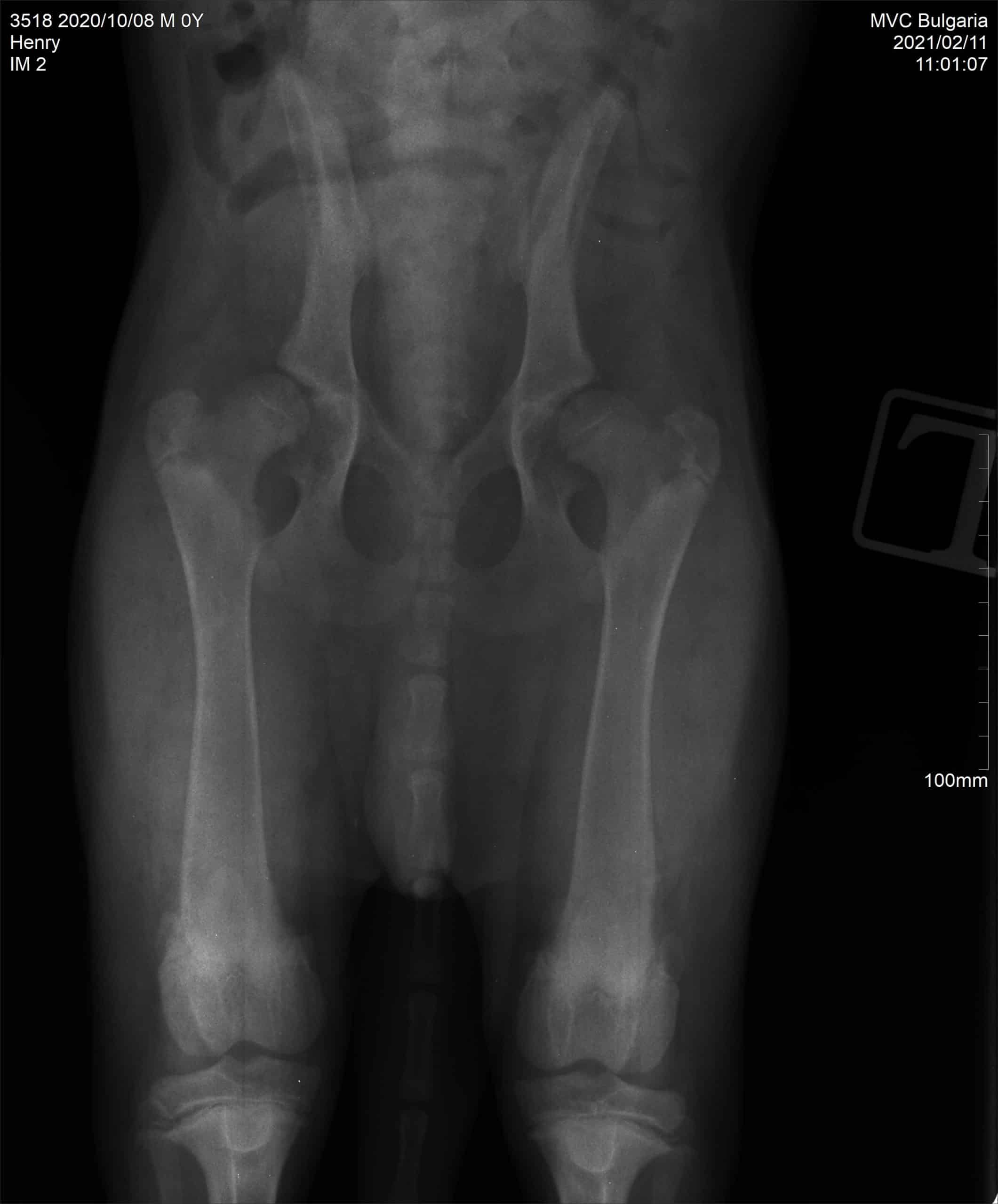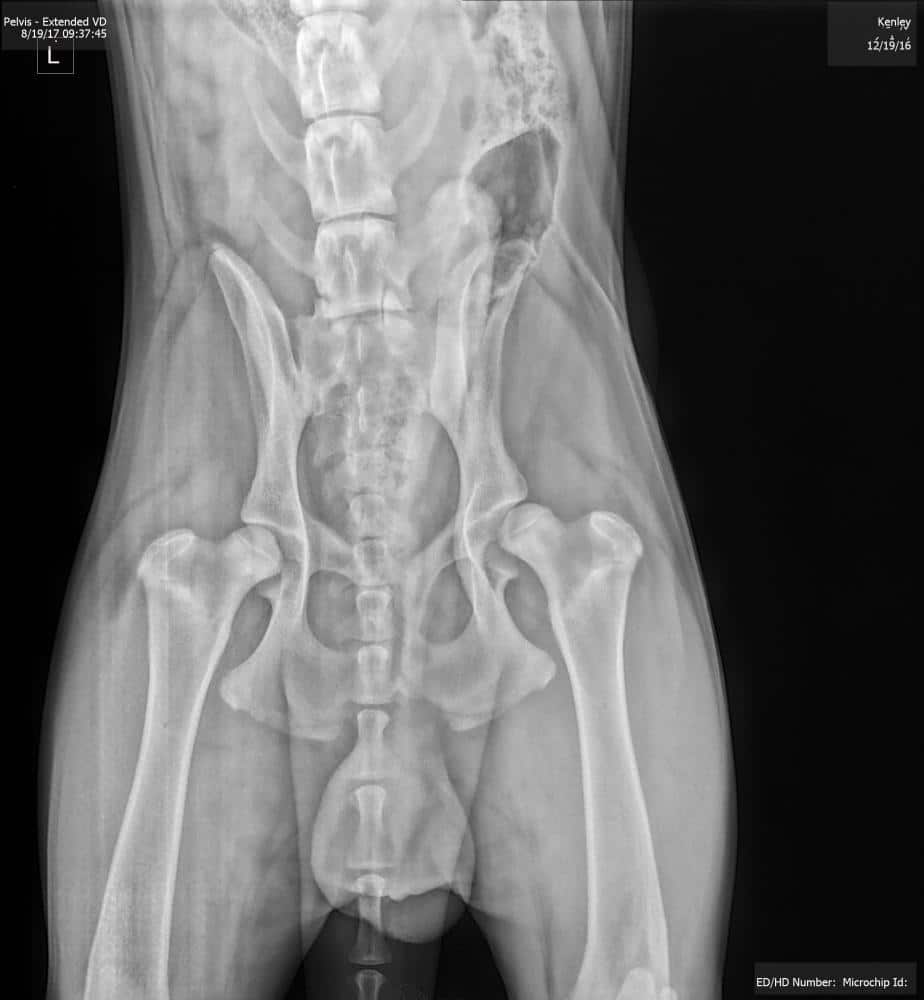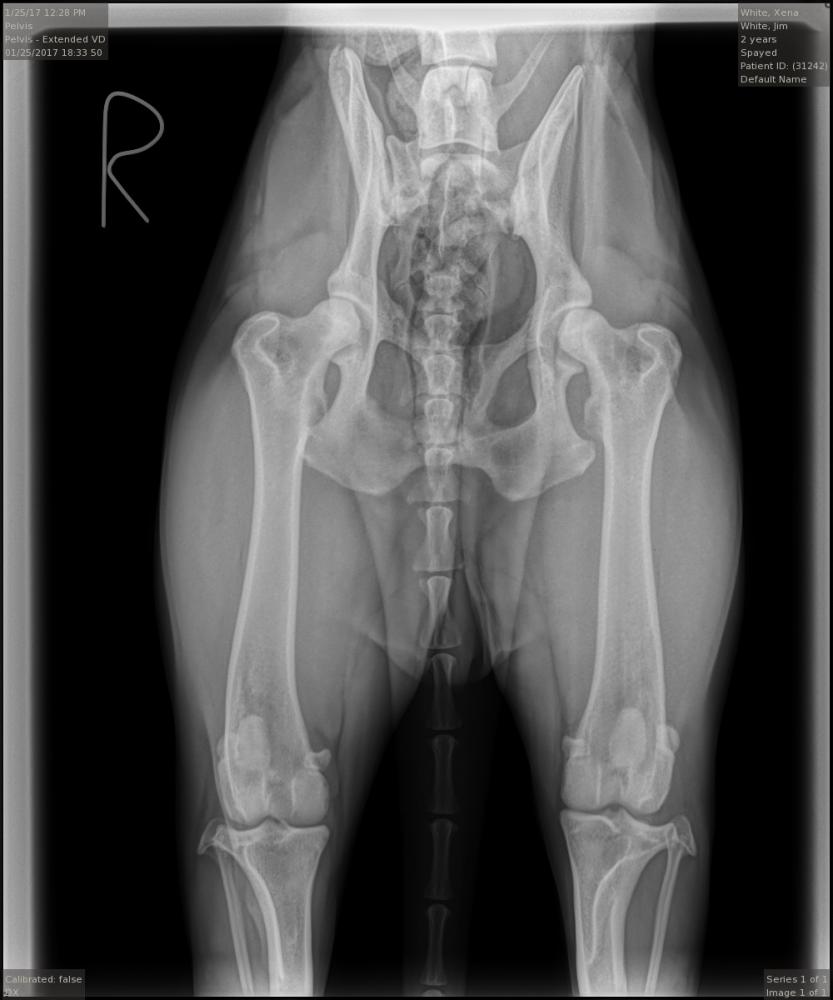Toegrips Dog Nail Grips
Dogs with hip dysplasia often struggle to rise from and walk on slippery floors. Dr. Buzbys ToeGrips® dog nail grips help dogs that slip and slide on slick floors with both their footing and confidence. ToeGrips® dog nail grips fit snugly on dogs toenails to restore their traction on hardwood floors and smooth surfaces.
The non-slip grips can make a huge difference in comfort and mobility for dogs with hip dysplasia.
Can Hip Dysplasia Be Fixed Without Surgery
Your doctor may recommend nonsurgical treatment if your child has mild hip dysplasia and no damage to the labrum or articular cartilage. Nonsurgical treatment may also be tried initially for patients who have such extensive joint damage that the only surgical option would be a total hip replacement.
You May Like: Why Does My German Shepherd Whine All The Time
Other Common Australian Shepherd Hip Problems
While hip dysplasia is the most prevalent canine hip issue, there may be other issues if your pup is displaying pain or discomfort in its hips or legs and CHD is not the cause. Panosteitis is another common issue that occurs in Australian shepherds. It is different from hip dysplasia in that it primarily affects the front legs, is temporary, and affects the long bones of the legs. It is most common in younger dogs, and like CHD, it can result in limping, lameness, swelling, etc.
Hypertrophic osteodystrophy is another growth-related leg issue that causes inflammation of the long bones. Osteoarthritis is a common ailment in older dogs caused by age-related muscle and joint degeneration. Other leg and joint diseases include osteochondritis dissecans and Legg-Calve-Perths Disease. Always consult with a veterinary professional for the correct diagnosis before moving forward with any treatment plan for your beloved pet.
It is never fun to watch your dog struggle with hip or leg pain, and it can be especially frustrating to watch pain limit your Australian shepherds natural love of running and playing. However, CHD is a treatable condition and there are many options that can ensure your Aussie is able to live a long, pain-free life.
Also Check: Vocal German Shepherd
Recommended Reading: Best Dog Training For German Shepherds
Reduce Pain And Inflammation
Theres a reason your dog is hesitant to play ball like he used to, after all. Hes in pain from common German Shepherd hip problems!
But fortunately, MSM, a powerful antioxidant and building block for healthy joints, can help reduce the pain and inflammation your dog experiences from hip dysplasia.
And the great news is that this ingredient is often found in joint supplements. Additionally, MSM may become even more effective when used alongside glucosamine, another common active ingredient.
To top it all off, MSM is great for your dogs immune system, so he wont have to deal with something as mundane as a cold on top of managing his hip dysplasia.
Why Are German Shepherds Susceptible To The Condition

All kinds of dogs can be affected by hip dysplasia, but it is most common in large dogs such as German Shepherds, Golden Retrievers, Bulldogs, and Saint Bernards. German Shepherds are at particular risk for the disorder because they are highly active and because of inbreeding in the breeds history.
The condition is hereditary, meaning that it is passed on through genetics. If it is present in your dogs lineage, its more likely that your dog will eventually get the disorder as well.
Don’t Miss: German Shepherd Puppies Spokane Wa
Proper Diet For Dogs With Dysplasia
Your dogs weight plays an important role in the wear and tear on their hips. Extra weight adds stress to hip joints, so ensure your dog is on a healthy diet, especially if theyre a large breed. You can work with your vet to find the right eating regimen for your dog. Keeping your dog at their ideal weight can slow the onset of dysplasia.
You May Like: Is My German Shepherd Too Skinny
Clinical And Pathological Effects
Hip dysplasia is a disease of the hip joints. Dysplasia means abnormal development. Both hips are usually affected . It is a complex disease that results from a combination of genes that predispose a dog to developing hip dysplasia interacting with environmental factors that lead to its full development and expression . It is characterized by hip joint instability which, if compounded by environmental factors, then results in secondary osteoarthritis and the clinical signs of hip dysplasia which include pain, lameness and disability .
Hip dysplasia is described as a biomechanical disease. The hips appear normal at birth. However, in affected individuals, the hips develop abnormally due, at first, to joint instability . This means that the developing femoral head and acetabulum are not held constantly, closely together, and can move into abnormal positions relative to one another. This puts abnormal stresses and strains on the joint. Riser states this is due to the soft tissues, such as ligaments and muscle, not being strong enough to maintain congruity between the articular surfaces of the femoral head and the acetabulum ie the constant contact between the surfaces of the bones is not maintained.
Joint laxity can lead on to joint subluxation that in turn causes flattening of the acetabular cup and femoral head . The pathological changes seen due to the joint instability are progressive inflammation and degeneration of the tissues that together form the joint.
Recommended Reading: Why Do German Shepherds Have Hip Dysplasia
What If Nsaids Dont Help
The alternative to NSAID and medical therapy is surgery. There are several surgical procedures available to treat hip dysplasia. The two most common surgical techniques for hip dysplasia are total hip replacement and femoral head ostectomy . Other less common surgical procedures used to treat hip dysplasia include triple pelvic osteotomy , juvenile pubic symphysiodesis, and DARthroplasty. The choice of surgery will be determined by your pets age, condition, and lifestyle. Your veterinarian will be able to provide the best recommendations for your individual pet.
How To Prevent Hip Dysplasia In Your German Shepherd
Hip dysplasia is a type of disease from which every breed suffers. We all know that there are two types of hip dysplasia in German Shepherds, hereditary and environmental. So its better to take preventive measures for preventing hip dysplasia among dogs. As it is a genetic problem we should first try to prevent these hereditary causes.
Lets take a quick view of how we can prevent their hereditary cause.
Don’t Miss: German Shepherd Training Las Vegas
What Are The Causes Of Hip Dysplasia
The reasons behind hip dysplasia are as varied as the demeanors of different dog breeds. All of the following can play a part in its development:2
- Traumatic injuries
- Excessive or abnormal growth, such as the femur growing at a faster rate than the acetabulum
- Insufficient nutrition3
- Overly vigorous exercise when your German shepherd is still in their puppy stage, and specific types of exercise, such as running on hard surfaces
But the number one cause? Genetics.
Indeed, hip dysplasia is a ubiquitous hereditary condition among German shepherds and other large breed hounds like Labrador retrievers, golden retrievers, Great Danes, Saint Bernards, Bernese mountain dogs, Mastiffs, and Rottweilers.
Yet some pint-sized poochesare prone to hip dysplasia as well, including:
Canine Hip Dysplasia: How To Tell
Do your German shepherds hind legs appear bent? If so, it maybe be because of breeding. The exaggerated hind leg angulation is often bred into the dog because of standards that dictate rear legs should come as close to a 90-degree angle as possible. Along these same lines, a sloping back causes hindquarters to become more angulate and, thus, prone to lower back pain.
These bent legs could point toward one of many health problems, one of which is hip dysplasia. If you notice a difference in your dogs gait or resistance to climbing stairs, it may be a good idea to have a certified veterinarian check your pup out. Although irreversible, canine hip dysplasia can be monitored and treated to reduce chronic pain. According to the Orthopedic Foundation for Animals, 19.8% of German shepherds suffer from hip dysplasia. The progression of it and the treatment options available depend on a number of factors, including the degree of misalignment and age of the dog.
CHD has a range of signs, depending on the severity of the disease and degree of looseness in the joint. Symptoms include a bunny hop gait, limping, lameness in the hind legs, and decreased range of motion, among others. The severity also ranges from mild to extreme painsome German shepherds even have to use a wheelchair.
Also Check: How Much Are German Shepherd Puppies Without Papers
How To Prevent Hip Dysplasia In Dogs
At this time, there is no known way to prevent hip dysplasia in dogs. It appears to be a hereditary condition, and many dogs, especially large and giant breeds, are born with it.
Its recommended to start joint supplements for high-risk dogs as early as 3 months of age to ensure good joint health and protect the cartilage of the joints.
You should also work with your vet to make sure that you keep your dog at a healthy weight. Maintaining a healthy weight can reduce the amount of stress on a dogs joints.
How Pet Insurance Can Help

If youre like most pet parents, finding out your dog has hip dysplasia can be scary. But with the right care, your dog can still live a happy, healthy life. Pet insurance helps you say yes to the best care, even when its costly. Check out how Pumpkin insurance plans can help cover the cost of hip dysplasia.
Don’t Miss: Best Roomba For German Shepherd Hair
What Is The Cause Of Hip Dysplasia
This condition is primarily of genetic cause, although environmental factors such as obesity during puppyhood may influence whether an animal with the genes coding for hip dysplasia will develop a clinical problem. Current estimates state that more than one hundred genes code for hip dysplasia. It is important to recognise that environmental factors are unable to cause hip dysplasia, although they can influence whether an animal with the genes that code for hip dysplasia will develop a clinical problem. There is no evidence to support the concept that excessive exercise during puppyhood can contribute to the development of hip dysplasia.
Common Causes Of Hip Dysplasia In German Shepherds
There are several causes of this condition which is hereditary and very common in large dogs. Dr. Wayne Riser conducted a lengthy study in 1975 on Canine Hip Dysplasia or CHD called Observations and Research on Hip Dysplasia.
He determined that several factors contributed to the disease. They included: accelerated growth as a puppy, enlarged head and feet, excessive appetite, thickset body with loose skin, and poor coordination in the gait.
You May Like: German Shepherd Puppies For Sale Houston Tx
Treating Dysplasia Without Surgery
Choose A Certified Breeder
One of the best things you can do to reduce the likelihood of adopting a German Shepherd that has hip dysplasia is choosing a certified breeder.
A certified breeder should have a detailed history of the dogs parents, so you can find out if theres any history of hip dysplasia.
More specifically, try to find a breeder that uses hip screening procedures, such as the screening that OFA and PennHip perform.
This basically just means that your breeder has submitted x-rays of the dogs it breeds to one of those organizations. OFA or PennHip then alerts breeders to any signs of hip dysplasia, and the dogs are taken out of the breeding pool.
And the result?
Your new puppy is that much less likely to carry any genes that will make him prone to developing German Shepherd hip dysplasia. Pretty snazzy!
You May Like: How Many Hours Do German Shepherds Sleep
You May Like: Best Dog Food For Large German Shepherd
Consider Taking Your Dog To Water Therapy:
Even though German Shepherds may encounter hip pain and other joint-related issues as they age, it doesnt mean that they lose any of their energy!
German Shepherds are known for being young at heart and will keep their playful spirit throughout all of their lives.
One of the best ways that a German Shepherd can release pent-up aggression without causing any undue pressure on their hip joints is through swimming.
While swimming in the water, all the weight will be taken off the hip area, while allowing your German Shepherd to work out their muscles and get active.
More often than not, for German Shepherds suffering from hip dysplasia, most owners will take their dogs to a water rehabilitation clinic designed specifically for animals suffering from these types of joint issues.
However, if you have a pool or local swimming lake that is suitable for dogs, you could also choose to take your dog here.
The Top 3 German Shepherd Joint And Hip Problems
German Shepherds have a long history of partnership with people. Originally bred as working dogs, they were favored for herding sheep and defending them if attacked. Known for their athleticism, intelligence, affection, and protective nature of their owners, they are also known for diseases that affect their breed disproportionately, because of poor practices by some breeders.
Sadly many of these great animals end their lives in pain, often unable to stand. There are three common causes for that, which might appear the same to an untrained observer, but require different treatment regimes.
Hip Dysplasia / elbow dysplasia
Hip dysplasia is caused by a malformation of the hip joint that causes deterioration of the cartilage, eventually causing pain, arthritis, and debilitation.
In a dysplastic joint, the bones are too loose and dont fit snugly in the socket. This allows the bones to move beyond their appropriate range of motion, causing bones to rub together. Over time that causes inflammation, along with increasing discomfort.
The Assisi Portable helps with Dysplasia by reducing pain and inflammation in the area, slowing deterioration and improving quality of life with effective pain management. Many animals with dysplasia no longer need pain medication after using the Assisi Portable regularly.
Degenerative Myelopathy
Panosteitis
Inbreeding and health problems
Don’t Miss: Can German Shepherds Eat Popcorn
How Long Can A Dog Live With Hip Dysplasia
Hip dysplasia should not shorten your dogs life at all. As long as it receives treatment and is well taken care of at home, any dog with the condition should go on to lead a full and active life.
Problems only occur if the dog eats too much or discomfort prevents them from exercising enough to keep their weight down. Weight gain can make the effects of hip dysplasia worse, which will in turn further reduce their ability to exercise, climb stairs and could cause heart problems.
Proper pain relief will prevent this from happening and will allow your dog to be as active as ever.
What Is Hip Dysplasia

Hip dysplasia is a painful condition that can affect dogs of any size, but it is especially an issue for large dogs. Canine hip dysplasia is common for German Shepherds especially because of their active nature and large stature. To understand the condition, lets talk about your dogs hip.
Your German Shepherds hip has a joint that works like a ball and socket. In healthy dogs, the ball and socket fit properly together, allowing the dog to move happily and without pain. Whenever a dog experiences hip dysplasia, the ball and socket dont fit together properly. As a result, they grind against one another.
Over time, this grinding motion causes the hip socket to deteriorate, which can cause the dog to lose entire function of the joint if left untreated.
Also Check: What Are The Dogs That Look Like German Shepherds
Stage : Adding Physical Therapy And Weight Management
When the hip dysplasia doesnt yet warrant surgery but does interfere with your GSDs quality of life, your veterinarian may prescribe physical therapy along with weight management as needed.
The simple fact is, when your dog is overweight, this puts more pressure on the hip joints.
Also, physical therapy can help your dog strengthen key muscle groups and learn how to workaround the hip abnormality.
Treatment Of Hip Dysplasia In The German Shepherd
Since hip dysplasia worsens over time, treatments attempt to delay development, relieve pain, and / or improve mobility . Here are some tips that can relieve the symptoms and pain caused by hip dysplasia in your German Shepherd dog, but dont forget that the best advice can be given by a veterinarian who has examined your pet.
- The first step may be to help your German Shepherd lose weight on a low-calorie diet, so it puts less pressure on the joints.
- Moderate exercise is best for dogs with dysplasia. Short walks and swimming are great ways to build muscle to support loose joints.
- Your vet can prescribe anti-inflammatory or pain reliever medications.
- A special diet with supplements to maintain joint health can make a big difference.
- A warm bed can help your dog sleep better and ease pain.
- If you have slippery floors, its best to provide some traction so your dog doesnt slip and re-injure his hip.
- In some cases, surgery is the best option. Some puppies with severe dysplasia may be recommended for less intensive corrective surgery. In other cases, adults with severe arthritis and joint damage may need a hip replacement or surgery to remove the head of the femur.
Read Also: How Often Should You Brush German Shepherd